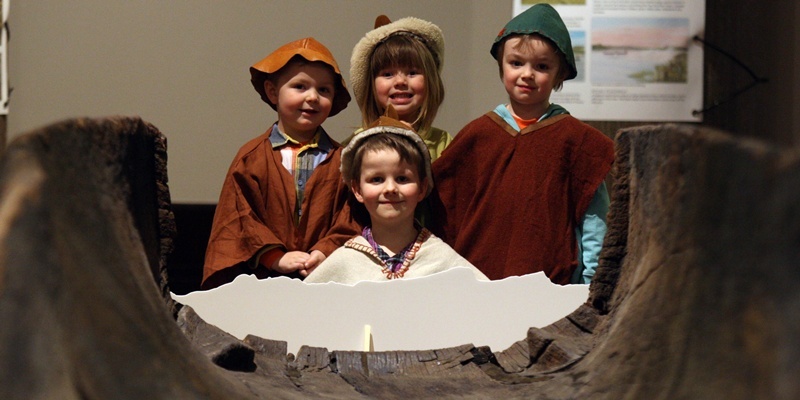More than a decade after its discovery, one of the finest archaeological finds ever to be made in Perthshire has finally gone on public exhibition.
Visitors are expected to flock to the Perth Museum and Art Gallery to view the 3,000-year-old Carpow logboat.
It has taken years of painstaking restoration and conservation to ready Scotland’s oldest example of one of the first known boats for display.
The logboat made its long-awaited return to Perthshire last month, when it was manoeuvred into Perth Museum in sections. It has now been made whole again and takes centre stage in a major new exhibition on the boat’s story and its Bronze Age origins, which opened on Monday.
Perth Museum and Art Gallery’s history officer Mark Hall said: ”It is like welcoming back an old friend one has not seen for several years and I encourage everyone to come and see the boat and fire up their imaginations.
”The exhibition guides visitors through the adventure of the discovery, excavation and conservation of the boat and also gives a sense of what life was like 3,000 years ago in the Tay valley. It explores who made and used the boat and how they lived, died and were buried.
”The logboat is on open display so as to give visitors the best view of it though without touching and will be in the museum until the end of January 2013.”
The boat was discovered partially submerged in the mud, sand and gravel of Carpow Bank, at the head of the Tay Estuary.
Carved from a single tree trunk, the simple craft was an example of one of the first known boats and was radiocarbon dated to 1130-970 BC.
Measuring around nine metres, its buried hull and stern remained in excellent condition, though the bow had been eroded by tidal action.
The site could only be accessed over the summer for around three to four hours each day and the site was reburied in tidal mud and sand at each high tide.
One unseen factor of the boat’s discovery was the deterioration that followed, with the exposed bow beginning to rapidly erode.
As the Perth and Kinross Heritage Trust team leading the investigations revealed that the oak boat had only survived because it had remained water-logged for all those years, efforts were begun to excavate it from the Tay.
It took until 2006 before funding could be put in place to uplift the boat and transport it to the National Museums Scotland Centre for Conservation and Analytical Research in Granton, Edinburgh.
Once out of the water, the vessel was at serious risk of disintegration and it needed to be cleaned, preserved and finally freeze dried before the teams were content that it was safe to display in a museum setting.
The conservation treatment involved replacing the water that saturated the boat with a chemical wax to prevent it drying out, shrinking and breaking up.
Once saturated with the wax it was freeze dried to drive out any last remaining moisture that might affect the boat’s stability.
To aid the penetration of the wax and to fit the boat into the freeze-dryer it had to be cut into three pieces.
The logboat now forms the centrepiece of an exhibition exploring Bronze Age Perthshire. A partial replica of a roundhouse built by the Scottish Crannog Centre forms part of the display, while there will be examples of the fine metalwork our ancestors offered to the goddess of the River Tay.
Editor’s link: The Carpow Logboat, on the Perth and Kinross Heritage Trust website
